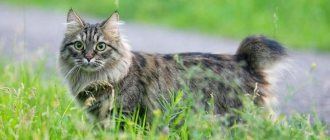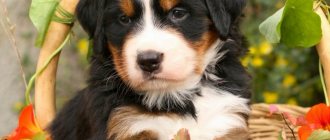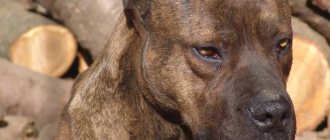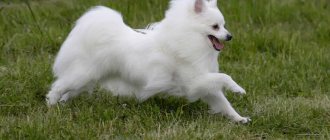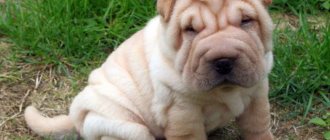A Bengal cat is a piece of wild nature in your hands, a companion with whom you will never get bored. Thanks to their wild ancestors, Bengals have some unique features:
- exotic leopard color;
- charming plasticity;
- muscular build;
- love of water and water procedures;
- excellent jumping ability;
- strong hunting instinct;
- playfulness and dislike of being alone;
- increased activity;
- friendly attitude towards dogs;
- good health.
Bengals are, first of all, luxury. Not everyone can afford it. The price of a purebred kitten from a good nursery amounts to thousands of dollars. The cost is determined by the color of the baby. The more a kitten resembles its wild ancestor, the more it is worth.
Breed characteristics
How difficult is it to care for the breed? | There are no particular difficulties. You need to care for your Bengal just like a regular house cat. |
Do Bengals need special food? | The diet of the breed is no different from the menu of other domestic cats. |
What size do they reach? | This is a fairly large breed. She has pronounced sexual dimorphism. Males weigh 6–9 kg, females 3–5 kg. |
Besides color, does the breed have any similarities to its wild ancestors? | Cats have hind legs that are longer than their front legs, and this gives the animal a special gracefulness to its movements. They also have a silky coat, and they have a special coat structure, as well as the “ugly duckling” stage inherited from their ancestors - phasing. |
What is phasing in Bengal cats? | Phasing is a protective gray fluff that covers the bright color. It appears at 1.5 months. At this age, in nature, kittens leave their mother's den and need camouflage. Babies of all wild cats are susceptible to phasing. |
At what age do Bengals acquire the characteristic color of the breed? | By 3–4 months, phasing usually disappears. But the color is finally formed before the age of 8. At this age, cats become sexually mature. |
Why are kittens of this breed so expensive? | The breed is not very common and difficult to breed. And breeding work requires significant financial investments. All this affects the price of kittens. However, in each litter there are more and less valuable kittens. The most expensive ones are with a phenotype as close as possible to the standard. |
Are Bengals hyperactive cats? Can they live in an apartment and not create chaos around them? | Pets can be mischievous. For them, running along window sills and jumping on the sofa is just a game. Even as they grow up, they remain kittens in temperament. But they have high intelligence. They are easy to train and quickly understand what they are allowed to do and what they are not allowed to do. |
Do Bengals leave marks in the house? | Unfortunately, animals of two sexes mark their territory. And during the period of rutting and estrus, the night calls of the sexual partner can also be heard far away. The problem can be solved by sterilizing pets. |
Is it true that Bengal cats have a special relationship with water? | Bengals love water. They enjoy playing with a stream of water, splashing water from basins left unattended. And before drinking, they instinctively rake out the non-existent algae in the container with their paw. |
They say Bengal cats don't shed. So are they suitable for allergy sufferers? | Representatives of the breed have short, silky hair. She doesn't shed much. But this does not mean that pets do not cause allergies. Moreover, for allergy sufferers it is not so much the fur that is dangerous, but the saliva and other secretions of animals. |
How does a Bengal cat behave in the house? | The cat chooses one “favorite” in the family and accompanies him everywhere. But she also loves to play with other people she knows well. |
Attitude towards children and other family members | Bengals are very sociable. They play with both children and adults. |
Attitude towards other animals, dogs | They get along well with animals. Preferred playmates are small breed dogs. They say that a Bengal is a puppy in a cat's body. |
Do Bengals need walking? | If possible, pets should be taken for a walk. They quickly get used to the harness and walk with pleasure. |
What gender should you choose a kitten as a pet? | Males are more massive than females, but females are more graceful. As for character, everything is individual. Choose the kitten that you like best. |
How long do Bengal cats live? | Average life expectancy is 12–15 years. There are also centenarians reaching their 20th anniversary. |
Advantages of the breed
- Has an extravagant appearance. This is a real indoor leopard with a good disposition.
- This is a strong, agile animal with a strong hunting instinct.
- Bengal is an intellectual. He grasps everything on the fly and quickly learns to understand his owner.
- His ability to train and remember commands is unique. This is a talented student who can be taught to perform various tricks.
- Friendliness and sociability are in his blood. Despite their physical strength, all Bengals are not aggressive. They don't bite or scratch.
- One of the cleanest animals is the Bengal cat. The description of the breed says that they have a silky coat. They take care of her themselves. Pets are bathed very rarely; as a rule, this is done before exhibitions.
- An interesting voice, not like the usual meow. The range of sounds is very wide - from simple rumbling to purring and clicking of the tongue. Owners note that these sounds resemble barking.
- Larger than most breeds. The average weight reaches 5–8 kg.
- These cats are excellent jumpers. Thanks to their elongated hind legs, they make long and high jumps of amazing strength.
Disadvantages of the breed
- The breed is considered one of the most expensive. A cat named Kato holds the Guinness Book record for being the most expensive. In 1998, a London resident bought it for 41 thousand dollars.
- The high price has led to the emergence of unscrupulous breeders who want to make money on the popularity of the breed. More and more kittens are being born with genetic abnormalities.
- Pets need physical activity. You need to walk with them at least once a week, and preferably more often.
- Socialization needs to be given significant attention. It is important to teach babies to use their hands, otherwise they will grow up wild.
- The passion for marking territory was passed on to domestic animals from their wild ancestors. Only castrated animals do not have this extremely unpleasant habit.
- The high activity and playfulness of the breed will not appeal to pedantic people who value order. Mini leopards love to run around everywhere, turning over flower pots or stacks of neatly folded things.
- They are extremely curious, interested in the contents of cabinets and chests of drawers with slightly open doors.
Description of the rules for caring for the appearance of Bengal cats
The Bengal cat breed is unpretentious, so caring for its appearance will be easy. If your pet Bengal is not preparing for shows or professional exhibitions, then care will consist of infrequent brushing of the hair, cleaning the ears, trimming the nails, and bathing. This needs to be done regularly, so some costs are expected for cat hygiene products.
How to care for your Bengal's fur
Being a breed with a smooth coat, a healthy Bengal cat or she-cat will be quite capable of tidying up its coat on its own. A priori, the animal does not need a haircut, and combing should not be done more than twice every 4-5 weeks. Bengals are not characterized by the formation of stray hair (tangles), they do not suffer from skin diseases, and practically do not shed. It is better to add shine with a special comb or brush, combing the animal first against the growth of the fur - this will rid the luxurious thick coat of fallen undercoat hairs. Nowadays a tool such as a cat furminator is used - it will make the task of combing easier, as it works on the principle of a trimmer. After the procedure, which ends with smoothing the fur along the natural growth of the coat, it is necessary to eliminate the combed hairs with a rough special glove.
Water treatments for a Bengal cat
Bengals are not a breed that confirms the saying “as afraid as a cat of water.” If desired, the animals themselves play with water in the bathroom and do not refuse to bathe. Owners should consider:
— too warm, much less hot, water is contraindicated for cats;
- owners’ detergents are not suitable for animals - to avoid allergies, you need to buy special cat shampoos, where the developers have balanced the concentration of alkalis;
— a bath with lukewarm water should be taught from a young age, offered no more than once a month, preferably after trimming the claws.
It's a good idea to get your Bengal kitten used to blow drying. If the animal comes back from a walk dirty, use so-called dry shampoos without abusing water treatments. Coarse grooming powder is a modern version, continuing the traditions of British breeders who in past centuries brought the coats of shorthairs into perfect order using bran. Dry mixtures are sprinkled on contaminated areas of the hairline, after ruffling it. The second stage is combing out the powder along with dust, debris, and dirt. You can simply blow out the residue with a hairdryer. A Bengal cat's paws can be washed frequently - after every walk.
What grooming does a Bengal cat need?
If the owner of a Bengal cat does not want things in the house to be damaged by the sharp claws of the pet, it is necessary to regularly do a pedicure - trim the tips of the claws with sharp tweezers. For the procedure, you need to choose a time when your pet has been running and jumping and is in a relaxed, resting mood. By lightly pressing the paw pad, you need to force the animal to show its claws. Having accidentally cut off living tissue and discovered protruding ichor, you must immediately treat the claw with hydrogen peroxide. Pedicure, if the Bengal does not come to the scratching post very often, will have to be done 2 times a month.
To avoid inflammation of the gums (gingivitis) and the formation of tartar, the cat’s teeth must be freed from plaque - such hygiene should be carried out once every 10 days, especially if the animal’s food is often soft. You will need to buy a brush and a special cat paste.
The small ears of Bengal cats require infrequent but regular cleaning: wax should not accumulate inside. You also need to monitor the condition of the mucous membranes of the eyes so that they do not “sour” - to relieve minor inflammation, you can drip warm tea leaves into your eyes. But if your eyes are constantly watering, you need to show the animal to a veterinarian.
The Bengal will need especially careful grooming if he intends to show his ideal appearance at the exhibition. Felinologists warn: frequent visits to beauty salons have a detrimental effect on the animal’s psyche and health.
Photo of a Bengal cat
Character and behavioral characteristics
A real domestic leopard with an easy-going character is the domestic Bengal cat. She did not inherit her character from her wild relative. From her ancestor she inherited her color, love of water and an unusual voice. Otherwise, this animal has all the features of a pet. His hunting qualities appear only in games.
At exhibitions, this breed's temperament is assessed especially strictly. Only calm and affectionate animals receive positive ratings. Aggression and aloofness are considered a marriage. Individuals with such traits are not allowed for breeding.
Basic character traits
- Representatives of this breed are smart and quick-witted, and quickly get used to the tray and scratching post. Many useful skills are learned simply by observing people's behavior.
- They are independent and freedom-loving. They don't like being picked up against their will.
- Bengal women single out one person in the family to whom they become more attached than others. They love to watch him. At the same time, they try not to let him out of sight for a minute.
- Pets are very sociable. Loneliness is not good for them. They run wild and often leave marks on their owner’s things in retaliation.
- High gaming activity continues into old age. They are interested in outdoor games at any age.
- Security qualities appear more often in males, especially if they live in a country house. Bengals protect their territory from other cats.
- Pets do not accept screaming or physical punishment. Any manifestations of aggression towards them are contraindicated.
- Leadership qualities are clearly expressed. If there are other animals in the house, the Bengal will try to become the head of the pack. When keeping cats of the same sex, fights can occur.
Peculiarities of Bengal behavior in the house
- This is an excellent mousetrap. His hunting instinct is very developed. He hunts exactly like his wild relatives, setting up ambushes and waiting for the right moment.
- Pets are characterized by caution and prudence. Males will not go straight into a fight. They, like real hunters, will wait until the opponent loses his vigilance and attack from behind.
- Cats show emotions with various sounds. The characteristic rumbling most often accompanies meals and displays of tenderness towards the owners.
- They do not show aggression towards all family members. They behave warily with strangers at first. Their trust must be earned.
- They love to play with children. For pets, a child is a good playmate. In the game he does not show aggression, but sometimes he puts out his claws, like any cat.
- This is a partner animal, the Bengal loves to take part in all household chores
- Pets are especially active in the mornings and evenings. Favorite pastime is hide and seek.
- They have a lot of fun drinking water. They dangle their paws in the water, clearing the bowl of imaginary duckweed. A program turns on in the cats' heads, and they imagine that they are drinking water in at least the Ganges River.
- Genetically they have another feature. Domestic leopards, like their ancestors, prefer to relieve themselves in water. Therefore, they can easily be taught to go to the toilet.
- They love walks outside. Unlike most breeds, they get used to a harness well and look forward to every appearance.
Care and maintenance
An exotic and expensive breed, oddly enough, does not require special care. Like other pets, they require good nutrition and some hygiene procedures. They don’t need to be brushed daily; they don’t need expensive care cosmetics either. It is enough to follow simple rules of care.
Basic rules of care
- Pets have special fur. It is short and silky. Cats shed lightly and do not need to be brushed. They take care of their fur themselves. During seasonal shedding, it is enough to remove dead hairs with a rubber glove.
- Bengals are rarely bathed. The procedure will bring a lot of positive emotions, because water is almost a native element for this breed.
- An active cat usually grinds its claws down on its own. It is necessary to install a scratching post for him. Inspect the claws once a week, and if necessary, cut off their dead part with special nippers.
- Eyes should always be clean. The accumulated secretion in the corners is removed with a piece of clean cloth.
- Ears are regularly cleaned of wax and dust with cotton swabs. During the procedure, a special product is used.
Bengal care
Before you decide on a grooming schedule for your Bengal cat, you should understand why caring for a Bengal cat requires you to follow slightly different rules. To get to the heart of the matter, we need to take a quick look at the breed's grooming habits and the reasons for them. By all accounts, Bengal cats shed less than other breeds; some people even insist that they don't shed at all, but there is no evidence to support these claims.
However, whether they shed or not, there is no doubt that Bengal cats groom themselves just as often as other cat breeds. This frequent grooming increases the amount of saliva the cat collects from the environment. The protein contained in this saliva causes people to be allergic to cats; however, Bengal cats are generally considered hypoallergenic.
But why is this technical information important for those trying to create a care plan for Bengal cats? Simply put, if you want to take care of your Bengal, you need to take this information into account.
If, for example, you're trying to figure out how often to brush your Bengal cat, you'll probably want to take into account that this cat breed doesn't shed as much as others. Additionally, if a family member is allergic to cats, you may want to brush them less often. No matter how often you brush your cat, make sure you use the right brush and brush in the direction of your cat's fur.
Feeding Bengal cats
The wild ancestors of the domestic Bengal in nature feed on game caught during hunting. These can be small rodents, birds, lizards, and sometimes fish. Moreover, small cats eat them completely - with the skin, offal and stomach contents. This way they provide themselves with the necessary vitamins, minerals and fiber. When composing your pet’s diet, you need to take this feature into account.
The Bengal's gastrointestinal tract is structured differently than most breeds. From their wild ancestors they inherited a short intestine and a very sensitive stomach. And the food that is considered habitual for the yard musk is simply not digestible for the mini-leopard. And due to the abundance of animal protein, your pet may have loose stools.
Natural food or prepared food?
As a rule, owners have to choose between natural feeding and ready-made diets. When choosing ready-made food, many problems disappear - you just need to purchase food of at least Premium class and provide your pet with free access to water.
High-quality food is sold in specialized pet stores, but not in a supermarket or market. They come in different types. There is food for both kittens and older cats. But some breeders, not unreasonably, believe that Bengals do not show up in all their glory when drying. And the reproductive rate of cats on natural food increases. Therefore, even adherents of dry food often choose mixed feeding.
When choosing natural food, it is important to properly prepare your pet’s diet and use only fresh and high-quality ingredients. The basis is meat products. But they need to be supplemented with vegetables, cereals, and other sources of plant and animal protein, not forgetting vitamin and mineral supplements. Finding a suitable menu is not easy, and you will have to test it on your pet yourself. This applies to both “drying” and natural feed.
Feeding mode
Depending on age, food is given with the following frequency:
- 1–2 months – up to 6 times;
- up to 3 months – 4 times;
- up to 5 months – 3 times;
- starting from 6 months – 2–3 times a day.
Features of natural feeding
The main menu of Bengals consists of meat (at least 60%), grains (up to 20%), vegetables (20%) with the addition of fish oil, vitamins, minerals and other substances (calcium, glucosamine).
The Bengal cat's diet includes the following foods:
- poultry and poultry by-products (it is necessary to take not only offal, but also parts rich in cartilage - necks, heads);
- rabbit meat and lean beef (including offal - tripe, lung, heart);
- raw or boiled quail eggs;
- Boiled cereals (buckwheat, rice), you need to be careful with rolled oats;
- boiled or raw vegetables (carrots, pumpkin, zucchini, beets, cucumber), eggplants and potatoes should not be given;
- low-fat fermented milk products and cottage cheese;
- vitamin complexes.
Many breeders feed Bengals raw chicken necks. To do this, they are frozen for 2 weeks, then thawed, doused with boiling water and crushed. For adult cats, it is enough to beat them with a hammer; for kittens, the necks are crushed in a meat grinder or blender.
Fish is given occasionally. This is not a staple for Bengals. It can cause problems with the urinary system. Cow's milk is completely contraindicated for cats. It causes diarrhea. Instead, they give yogurt without filler or yogurt.
When switching to a new food, you need to monitor not only your pet’s well-being, but also its stool. If your stool smells too strong, you need to make adjustments to your diet. This also applies to the smell of urine.
Kitten diet
Until 4–5 weeks, the kitten feeds on its mother’s milk. Then other foods are introduced into his diet. The smaller the kitten, the shorter the intervals between feedings. Portions are calculated individually.
As a first complementary food, babies are given scraped chicken meat, after dousing it with boiling water. Later you can give chopped meat products. Then the kitten is “introduced” to cereals and eggs are added to the menu. Vegetable supplements are introduced last. For this purpose, vegetables are boiled and chopped. The pet is switched to an adult diet at 8–12 months of age.
Video “What you need to know about the Bengal cat”
From this video you will learn about how the Bengal cat breed appeared, how to care for and feed it.
Recommended Posts
Standard height and weight of the Cane Corso breed by month
Weight of a puppy and an adult Labrador by month
Description and content of the hunting border terrier
Weight and height of a German Shepherd puppy by month
Description and care of the highly intelligent Border Collie breed
Description of forms and features of treatment of enteritis in cats
Upbringing
The efforts of the owner determine how cute the kitten will grow up to be. The breed is not particularly difficult to train. Its representatives easily remember all the requirements placed on them. They get used to the tray quickly. But they can walk by if the cat litter box is not very clean. Therefore, it is better to use wood filler. It masks odors and is pleasant to rummage through. And Bengals tend to bury their excrement. Therefore, choose a pot with high sides for them.
Bengals are very playful. They should have their own toys. Otherwise, pets will find replacements for them in the form of the owner’s things. If you don't want your animal to seek adventure, play with it as often as possible. This will help establish contact with the purr.
It is important to teach the animal to respond to the “No” command. At first, it can be combined with pinching the baby’s neck. This is how his mother cat taught him, and this touch is familiar to him. But you should not use violence against your pet. This will undermine his trust in you. Damaged relationships will be difficult to renew.
If you plan to walk your pet outside, teach him to calmly respond to the collar. Always wear a comfortable harness when walking in the city or outdoors. These animals are very curious. Without a leash, they can harm themselves by going to explore unknown worlds.
Bengals not intended for breeding are neutered before the age of 6 months. This is a simple operation. Cats tolerate it well. Sexually mature cats not only create inconvenience in the house, leaving marks everywhere, but can also run away during the “hunt.”
Health, tendency to disease
This is a hardy breed with good health. The first Bengals only had problems with the gastrointestinal tract. Pets still often have intestinal disorders. But over time, other diseases began to appear in pets. These are hypertrophic cardiomyopathy (HCM) and flat chest syndrome (FCK) in kittens. Allergies are not that uncommon.
As for the weak immune system, it is characteristic of lines in which matings between close relatives were allowed more than once. Such individuals must be regularly vaccinated and dewormed.
Disease Prevention
- A well-chosen diet - the food must be fresh and of good quality.
- Annual examinations with a veterinarian - an experienced specialist will identify most dangerous diseases at an early stage.
- Vaccination - kittens are vaccinated in the nursery, then the new owner must adhere to the vaccination schedule against the most common feline diseases.
- Control of parasites – the Bengal needs to be protected from helminths, ticks and fleas.
- Sterilization – if animals are not involved in breeding, they must be sterilized. There is no other option. There is no such thing as “giving birth for health.”
Choosing and caring for a kitten
If you just choose a pet, the choice is made on the baby you like best. The main thing is that he is healthy. This is evidenced by clean eyes, good appetite, shiny coat, and absence of swelling near the anus. When choosing a show-class pet, there are more requirements. The baby must meet the standard. This applies to color, exterior and character.
Three types of color are considered classic:
- rosetted (roset) – spots have a light base with a dark edging;
- marbled – dark patterns on a light background;
- spotted color (spotted) with evenly colored spots on the pet’s fur.
There are also more rare colors: lynx, mink, sepia. Until recently, Bengals were dominated by warm coat tones. Today the blue color is recognized, and snow Bengal cats have appeared. Moreover, the color of kittens does not appear immediately. Only in sexually mature animals does it become as bright as possible. The new owner can only guess what color a 4-month-old baby will have. Therefore, it is important to buy kittens only from reputable breeders.
Starter kit for rehoming a Bengal kitten
It will be different in each nursery. As a rule, it includes:
- contract of sale;
- veterinary passport with vaccination records;
- pedigree or metric indicating registration in the club;
- food that the baby is accustomed to;
- toilet filler;
- recommendations for feeding a kitten.
Origin story
Bengal cats appeared about 30 years ago. This breed is the result of selection work on crossing domestic pets with wild relatives from India. Its founder is considered to be the American Jane Mill.
Attempts to breed an animal with leopard coloring from a specimen brought from Malaysia were unsuccessful. The offspring resulting from crossing with a domestic animal died.
Later, a kitten was brought from New Delhi, which became the ancestor of this breed.
Breed standards in the WCF system
| Weight | From 4 to 8 kg. Cats weigh less than cats. |
| Appearance | Medium to large size, muscular and strong elongated body. |
| Temperament | Affectionate character, lack of aggression. |
| Torso | Powerful and elongated. |
| Head | Relatively small, slightly elongated. The skull has a convex shape behind the ears. The transition of the head to the neck is smooth. |
| Muzzle | Full and wide. The whisker pads are large and convex. |
| Chin | Strong, in line with the tip of the nose. |
| Eyes | Oval, almost round, moderately large. The color depends on the coat color. The brighter it is, the better. |
| Ears | Medium to small, wide set. Quite short, wide base, rounded tips. |
| Nose | Big and wide. |
| Neck | Long, strong, muscular. |
| Wool | Shorter than average length, may be longer in kittens. Delicate and silky, dense texture. |
| Drawing | Marbled, rosette and spotted. Maximum clarity and contrast. |
| Color | Brown patterned in different colors: brown, sepia, mink, lynx. |
| Paws | Strong, medium length. They have large rounded feet. |
| Tail | Thick, medium length. Tapers towards the end, with a rounded tip. |
| Defects |
|
Reproduction and lifespan
The breeding season for wild leopard cats depends on the climate zone in which they live. In tropical and subtropical areas, the female can bear offspring year-round. In areas with severely cold winters, kittens are born in the spring.
Pregnancy lasts a little longer than two months. After 65-70 days, 2-3 kittens are born. It is impossible to raise a larger number of offspring under natural conditions. Kittens are born blind and weigh 80-120 grams. They mature in two weeks.
At one month of age, permanent fangs appear and the kitten begins to eat meat. At three months they show considerable independence. They finally grow up and separate from their mother when they are one year old. At this age, young animals can lead an independent life and bear offspring.
Owning a domestic cat is usually an option that does not involve producing offspring. At a very early age, the kitten is sterilized, which ensures a quiet life for the owner and a serene existence for the animal.
Breeding Bengal cats is the domain of professional breeders. Having reached the age of 8-9 months and having gained 2-2.5 kg of weight, the cat begins to hunt. Males mature at 9-10 months. A difficult period begins in the animal’s life.
A leopard-spotted domestic cat usually gives birth to 3-4 kittens, sometimes less. The small number of kittens in the litter is explained by their proximity to wild ancestors. The lifespan of wild Bengal cats does not reach 10 years. Domestic cats live longer: 12-13 years.
History of the breed
The Bengal cat is a hybrid of a domestic cat with a wild Bengal cat (Prionailurus bengalensis) as a result of the work of phenolenologists. In the 1960s, American scientist Jane Mill brought a wild Bengal cat from Taiwan to Arizona. Either she wanted to save a wild animal in this way (the species was threatened with complete extermination), or she simply decided to buy it as a souvenir.
In the house of an American woman, a small leopard accidentally “became friends” with a domestic cat, resulting in the birth of offspring. This is how the idea of creating a breed with the appearance of a leopard and the character of a domestic cat arose.
In 1963, Jane brought a representative of the wild species from Asia for breeding work and bred it with the American Shorthair. But in 2 litters, the males were born sterile, but wild females with domestic cats gave birth to offspring capable of reproduction.
The work was long. But she was crowned with success. For a very long time, Bengals were not recognized by any phenological association because of their wild ancestors. But in the 80s they finally got to the exhibition, where they created a sensation. And in 1991, the breed was recognized and given official status.
Bengal cats are good house cats
All cats make good house cats, and the Bengal cat is no exception because it is a domestic breed. This means that they were bred to be domestic cats (as opposed to their ancestors such as lions or tigers).
Bengal cats can also be indoor and outdoor cats. They may spend most of their time indoors but will venture out for adventure and exercise. I would not recommend getting a Bengal cat or any other cat if you plan to keep it outside for most of its life. Cats love the comforts of home too!
When dealing with a domestic cat that is as active as a Bengal cat; consider having a cat protect the house.
This includes protecting all your valuables, using exercise mats, or setting up plenty of scratching posts, food bowls, and toys throughout the house for your cat to play with. Cats love windows, so make sure your cat has plenty of places from which he can look out and observe the world around him.
Keep in mind that Bengal cats shed just like other cats, so always keep it clean.

